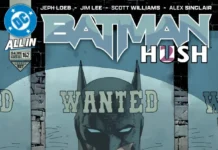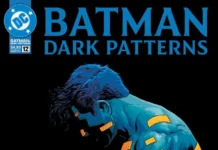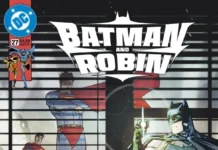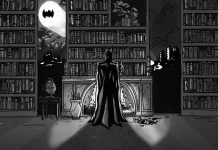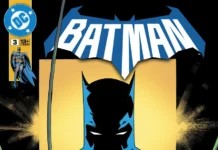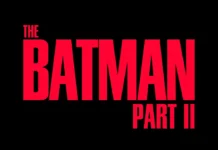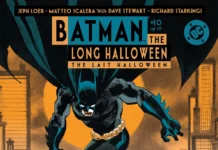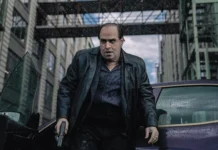Review by Trey Jackson
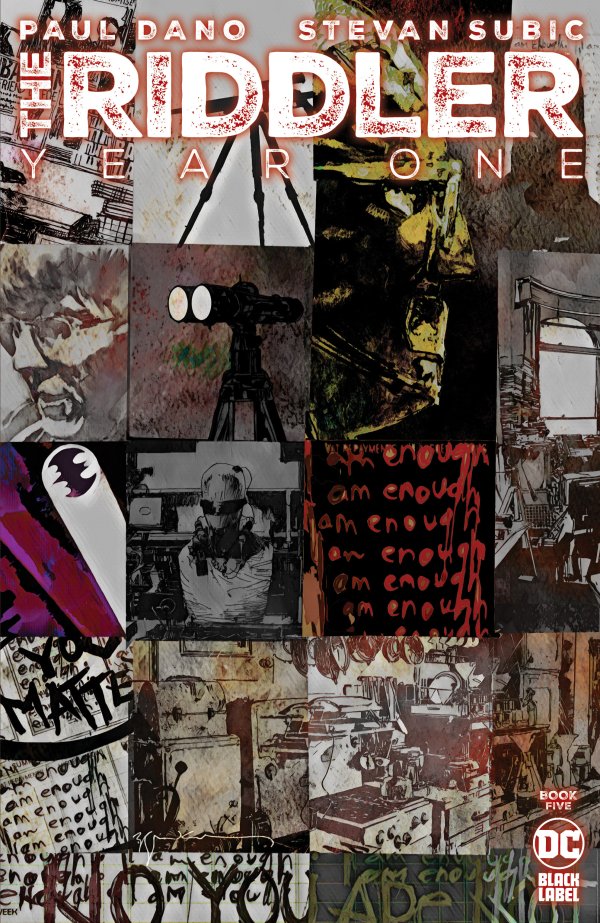 Blinded By the Light
Blinded By the Light
Issue four was the high point for this series so far. Like I said in that review, I think this telling of the Riddler’s backstory could reach Heart of Ice levels with fans after we’ve had a few years to process it. It’s just so tragic, and even though you know you’re reading the story of someone who goes on to become a serial killer and a terrorist, you can’t help feeling sympathy for him every step of the way.
Then you get to issue #5.
I’m not saying issue 5 is bad, mind you. It’s not bad at all. It’s a bold experiment that offers a really intriguing twist on its material. But it is a significant departure from the book to this point, not in quality, but in presentation and story advancement.
To be honest, I’m not even sure how to review it as a comic book. Issue 5 is, aside from a few panels at the end, the pages of Edward Nashton’s journal seen in the movie. It’s more like a collector’s item than a comic book. It’s something you’d find in the ultimate collector’s edition of the movie a few years from now. It’s literally his musings, plans, some clippings, and so on. Definitely, the product of someone whose mind is broken. He’s given his plan a title: Real Change Project. You the reader get to see how he set up what we saw play out in the movie.
In only the first couple of pages, we can tell that Edward has hit his breaking point. He can’t fight the urge to commit violence anymore. Too much wrong has been done to him and others. And on top of that, Batman is out there doing everything Edward wants to do and earning praise for it. He writes about what he found in the D.A.’s files. He writes about election day as the perfect time for his judgment, for exposing the city’s corruption. And he decides, like Batman, that he needs a little theatricality.
We also see a couple of selfies in Edward’s new apartment and some other pictures you might recognize from the movie. Ever wanted to read his journal page where he decides on the name Riddler? You’ll find it in this issue. Ever wanted to see a map of Gotham City as it exists in the Batman Saga? That’s here too (and if you like lore like I do, you’ll think it’s pretty cool!).
But even with these cool little details, you might be looking for more story and character details in the penultimate issue, especially after two months of waiting and two more months to go. This is the first time in this series that I think the every-other-month release schedule really causes problems. Now I’m convinced this will read much differently when it’s all collected and released as a hardcover or trade paperback. Reading the story of Edward’s childhood and on the very next page seeing the Riddler’s inner thoughts will make for a great experience for first-time readers. But two months in between those things is different.
One highlight of the issue is an op-ed written by real-world political analyst Ezra Klein. I guess the Gotham Times is the New York Times of the Batman Saga? Works for me. Anyway, his in-universe article is an opinion piece about how Gotham is, by definition, a failed state. This is because Gotham has all but officially ceded some of its authority of law enforcement to Batman. What are we to make of a political state that abdicates one of its basic functions to a vigilante? I’ll stop here before I start critiquing Max Weber and Thomas Hobbes in a Batman comic review, but I do enjoy it when comics intersect with topics like that. And here the point is clear: if Gotham is already a failed state, Riddler is well within his rights to carry out his plans. Klein even anticipates as much in his op-ed, noting that Batman won’t be the only vigilante as long as Gotham keeps on going on its current trajectory. That’s what Edward thinks anyway, remember, we’re reading his journal, and this is pasted in there for a reason.
So even though this issue is a strange read, it’s still a good one and one that will read better when read as part of the whole collection. Normally I review some specific things individually at the end here like the art, the plot, and the character development, but there isn’t much of any of those things. The lettering is the main visual creative work in this issue. It’s well done as far as being consistent with what we got in the movie. Often Edward’s writing is layered on top of itself, making it hard to read exactly what he’s saying. That gives you the impression that he’s obsessive and keeps writing and rewriting like his mind just won’t stop. It’s a cool device, but it means there are some pages and spots that just aren’t legible, so know that before you start trying to read everything as I did. The plot isn’t advanced much at all, though we do get to see some of his preparation for the events in the movie. As far as character development, I think reading a character’s journal is an interesting way to showcase his arc and development in a story. Giving us his journal to read is a way to show that he’s fully committed to his plan now, and has no hesitation. The thing is, we haven’t actually spent any “real-time” with him in four months (issue 4 was all a flashback remember). His break happened at the end of issue 3. Again, that won’t be a problem when reading this all together, it’s just a little jarring while waiting two months for every issue.
So overall, this is a good issue, I just wanted a little more, or maybe just to get the rest of the story a little sooner. Wanting more isn’t a bad thing though. Should you read it? Yes if you’ve been keeping up so far. But if you haven’t, you may find it more rewarding to wait until the full book is out, since you’ve waited this long already. Either way, I’m looking forward to seeing how it all wraps up. – Trey Jackson

